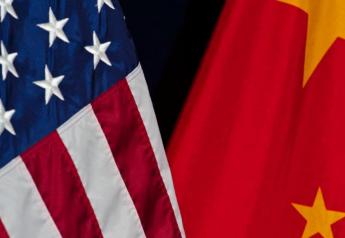A Farmers’ Vision of Hope for Africa

By Felix Kili: Eldoret, Kenya
I fell in love with farming as a child at harvest time, when my family brought in the crops we had spent the crop season growing.
Long days ended with me in the cab of our combine harvester with my father. As he drove, I watched the rows of crops being pulled into the corn head, one after another. Eventually the rhythm would put me to sleep.
Whenever my brother Rodney and I had school holidays, we were helping on the farm in the Rift Valley region of Kenya. We would ride along on the tractors in the heat of the day as dad cultivated the land. We pulled the weeds that tried to choke our crops. We would pick up rocks from the fields so they wouldn’t get in the way of the machines and later go fishing in the river passing through our farm. On hot days, we turned the drinking tank for our cattle into a “swimming pool” for cooling off.
I learned a lot growing up on a farm. The work was both exhausting and satisfying, and it taught me about the importance of discipline, making a strong effort and feeling grateful for what God has given.
Now God is about to give me something new: a child. My first son is due to be born in February.
I hope to be the kind of father that mine has been for me: a mentor and a hero. My dad put family first, dropping out of school so that he could take care of his younger siblings, providing for them and allowing them to continue their own education. He became a mechanic, fixing cars and trucks by day so that he could run his own tractors across small fields he leased in the evenings.
Through his dedication and passion, he saved enough money by 1998 to purchase the farm that we now own. Previously used by a tanning company to grow wattle trees, it was in bad shape. The soil was depleted of nutrients and turned highly acidic. He nursed it back into productivity, by adding lime and organic material from crop residue. He also built waterways to control erosion, saving the nutrient-rich topsoil from running off after heavy rains.
It took years but he succeeded, not only as a farmer but also a businessman: Today we grow wheat, barley, maize, canola, and sunhemp on about 600 hectares where we focus on taking better care of the land so it can be passed to the next generation in an even better condition.
Just as my father cared for the land, I plan to take care of it as well, so that my son can fall in love with it, too. A lot of people resist farming, and that includes the children of farmers. We’ll see what my son chooses, but my goal is for him to become a third-generation farmer who appreciates the opportunity. School is important but farming also teaches lessons about dedication and stewardship that no book or classroom ever could provide.
Agriculture is an ancient activity bound by tradition and habit, but today farming doesn’t mean doing things the way they’ve always been done. It means adapting to change and taking advantage of new technologies.
Today, our greatest challenge is climate change, along with increased costs of farm inputs and lack of access to technology such as biotech. With climate change, comes drastic weather and failed rains causing reduced food production or even total crop failure. To improve our efficiency and grow more food, we’ve adopted innovations in information and communications. We have weather monitoring and prediction systems that help us to determine the best times for planting seeds and fighting pests with crop-protection products. GPS auto-guidance systems prevent us from wasting fuel and fertilizer.
We have adapted to climate smart farming by taking up new approaches to protect our soil and conserve moisture, such as leaving behind crop residue and planting cover crops after harvest.
We’re planning for additional technologies, too, such as an irrigation system that can water our crops during dry periods
We have been denied access to technologies like biotech that would give us solutions to challenges we face. The menace of the fall army worm is real, posing danger to our economy and the environment. Access to technologies like Bt maize would help in defeating this awful pest, making our country more food secure.
My father hardly could have dreamed of these possibilities when he bought the farm, but he always has looked for ways to improve and he has trusted his sons to come up with ideas as well.
I am excited for the future of agriculture in Kenya and Africa. With appropriate policy, good agronomy, and access to all the modern agricultural tools available, I see a continent where farmers will start investing in their soils to enhance agriculture productivity, improve food production and uplift their lifestyles. There are opportunities for aspiring young farmers to take their own talents, incorporate them into their farming plan and be part of the next generation who will solve the world hunger problems.
When my son is a man who works the land that his grandfather brought into the family, he will think of additional possibilities: things that I cannot even begin to imagine.
But first, he must fall in love with farming, and I’m going to do everything I can to make sure that he does.
Felix Kili is a second-generation farmer, working with his father and brother Rodney on their family farm near Eldoret, Kenya where they grow wheat, barley, maize, canola and sunhemp. Felix is a member of the Global Farmer Network. www.globalfarmernetwork.org







